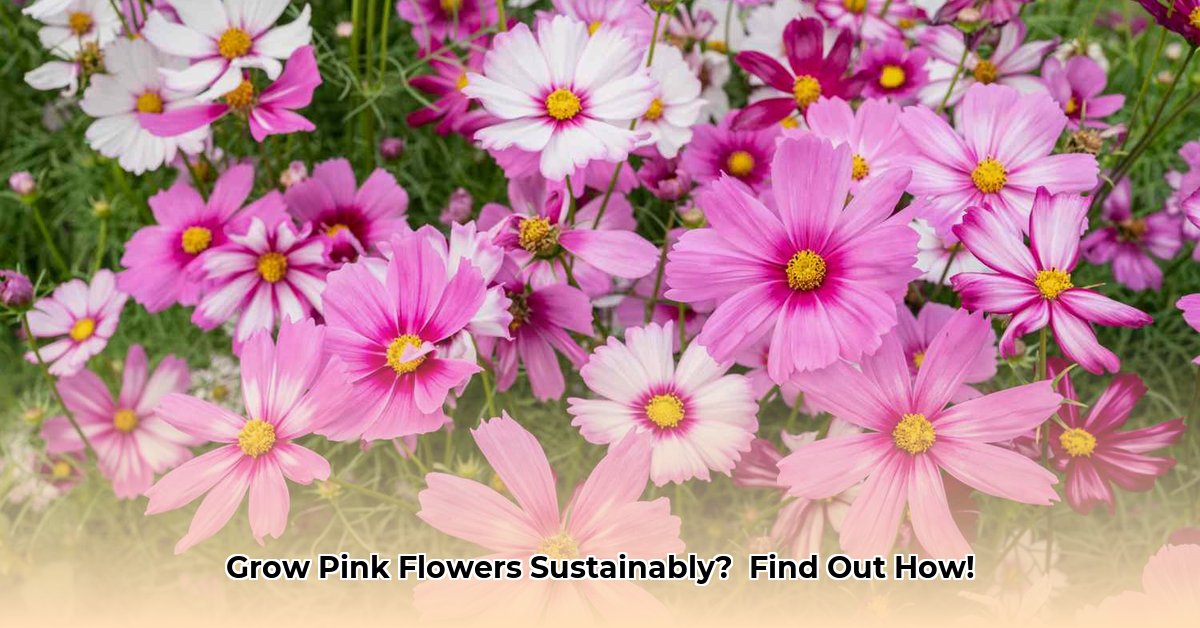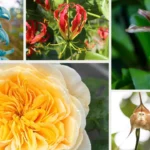Pink flowers, in their myriad shades, bring joy and beauty to our lives. But conventional cultivation methods can have a detrimental impact on the environment. This guide offers a holistic approach to sustainable pink flower production and consumption, empowering growers, consumers, researchers, and policymakers to cultivate beauty responsibly.
Sustainable Pink Flower Cultivation: A Deep Dive into Eco-Conscious Practices
Sustainable flower growing demands a shift in perspective, prioritizing environmental health alongside vibrant blooms. It’s about creating a harmonious relationship between nature and our desire for beauty.
Water Conservation: The Life Source of Sustainable Gardens
Water is precious, and efficient irrigation is paramount. Drip irrigation delivers water directly to the roots, minimizing evaporation and runoff. This targeted approach ensures each drop nourishes your plants, maximizing efficiency and conserving this vital resource. Supplementing with rainwater harvesting further reduces reliance on municipal water sources, lowering your water bill and environmental impact. Imagine a garden thriving on nature’s own irrigation system, a testament to sustainable practices and resourcefulness.
Natural Pest Control: Safeguarding Your Blooms and the Ecosystem
Integrated Pest Management (IPM) is a proactive approach to pest control, minimizing the need for harmful chemicals. By introducing beneficial insects like ladybugs and lacewings, you create a natural defense system within your garden. These allies prey on common garden pests, maintaining a balanced ecosystem and protecting your pink flowers without synthetic pesticides. Companion planting further enhances IPM, utilizing the natural properties of certain plants to deter pests and attract pollinators. This creates a thriving ecosystem where beneficial insects and plants work together to protect your blooms.
Soil Health: Nurturing the Foundation for Vibrant Growth
Healthy soil is the cornerstone of a flourishing garden. Compost, rich in organic matter, revitalizes the soil, improving its structure, water retention, and nutrient content. Cover crops, planted between flower cycles, prevent erosion, suppress weeds, and add further nutrients to the soil. These practices reduce the need for synthetic fertilizers, which can disrupt the delicate balance of soil organisms and pollute waterways. Building healthy soil is an investment in the long-term vitality of your garden, creating a fertile foundation for generations of vibrant pink blooms. Consider soil testing to understand its composition and tailor your approach accordingly.
Organic Certification: A Symbol of Commitment to Sustainability
Organic certification signifies a dedication to environmentally sound practices. It assures consumers that your pink flowers are grown without synthetic pesticides, herbicides, or fertilizers, prioritizing the health of the ecosystem and the people who work with the plants. This commitment resonates with environmentally conscious consumers, building trust and potentially opening doors to new market opportunities. While the certification process requires investment, the long-term benefits for your brand, the environment, and your customers can be substantial.
Minimizing Your Environmental Impact: A Practical Roadmap for Sustainable Flower Production
Quantifying and reducing your environmental impact requires a comprehensive assessment and targeted actions.
Calculating Your Carbon Footprint: Understanding Your Impact
Evaluating your carbon footprint is the first step towards minimizing it. Consider energy consumption in greenhouses, transportation distances for supplies and finished products, water usage, and the impact of any fertilizers or pesticides used. A Life Cycle Assessment (LCA) provides a detailed analysis of your operation’s environmental impact from seed to market. This assessment helps identify key areas where improvements can be made, creating a roadmap for more sustainable practices. Use LCA tools and resources to gain a precise understanding of your current impact and track progress over time.
Sustainable Growing Practices: Implementing Effective Strategies
Practical steps can significantly reduce your environmental footprint. Water-wise irrigation, IPM, soil health management, and the use of renewable energy sources like solar panels for powering greenhouses are all effective strategies. These practices not only benefit the environment but also enhance your business’s long-term sustainability and profitability. Explore innovative solutions such as vertical farming and closed-loop systems to further optimize resource use.
Consumer Choices: The Power of Conscious Purchasing
Consumers play a crucial role in driving sustainable practices. Demand transparency from florists about their sourcing and sustainability practices. Support local growers and choose seasonally available pink flowers. This reduces transportation emissions, supports local economies, and encourages more sustainable practices within the industry. Educate yourself about the environmental impact of different flower varieties and growing methods.
Research and Policy: Paving the Way for a Sustainable Future
Continuous research is essential for developing innovative sustainable techniques. Precision agriculture, vertical farming, and closed-loop systems hold immense promise for the future of flower production. Policymakers can support these advancements through incentives for organic farming, water conservation programs, and regulations on responsible pesticide use. Advocate for policies that promote sustainable agriculture and incentivize eco-conscious practices.
Cultivating Success: Expert Guidance for Growing Thriving Pink Flowers
Growing beautiful pink flowers requires understanding their specific needs and implementing best practices.
Choosing the Right Variety: Selecting the Perfect Pink for Your Garden
From delicate dianthus to classic roses, a vast array of pink flowers awaits. Research each variety’s specific requirements for sunlight, water, and soil type to ensure optimal growth and vibrant blooms. Consider your local climate and choose varieties best suited to your region.
Planting and Care: Nurturing Your Pink Blooms
Well-drained soil and adequate sunlight are fundamental for most pink flowers. Proper watering is essential – avoid both overwatering, which can lead to root rot, and underwatering, which can hinder growth. Deadheading spent blooms encourages repeat flowering, extending the beauty of your pink paradise throughout the season. Mulching around your plants helps retain moisture, suppress weeds, and regulate soil temperature.
Organic Growing Practices: Cultivating Healthy Plants Naturally
Organic methods prioritize soil health and natural pest control. Composting, cover cropping, and IPM minimize the need for synthetic inputs, creating a thriving ecosystem where your pink flowers can flourish. Consider using organic fertilizers and pest control methods to further enhance the health of your garden.
Long-Term Strategies: Planning for Sustainable Growth
Seed saving and propagation are sustainable and cost-effective ways to expand your pink flower collection. Diversifying your sales channels, such as farmers markets and online platforms, enhances resilience against market fluctuations. Continued research and education help you stay informed about the latest advancements in organic growing practices, allowing you to continuously refine your approach and cultivate a truly sustainable pink flower garden. Join gardening communities and connect with experts to share knowledge and best practices.
- Master Spoken Japanese: Jorden’s JSL Method - June 15, 2025
- Find the Best Hammer Tool for Any Job: Complete Guide - June 15, 2025
- Best Box Lighter Deals: Huge Savings Online Now - June 15, 2025
















